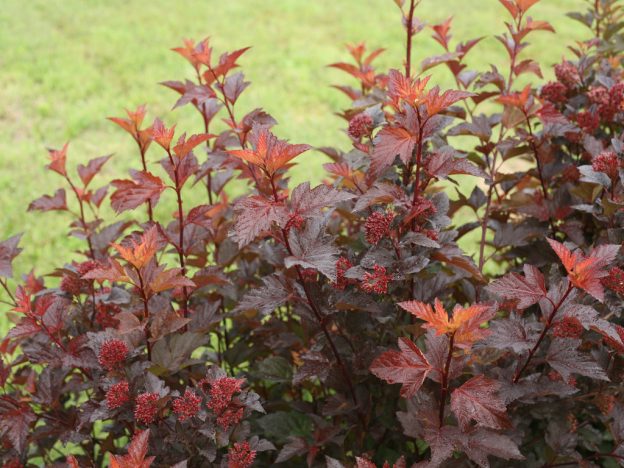Attracts beneficial garden insects like crazy. Your plant will be buzzing! Honeybees, butterflies, beneficial wasps, and moths love this plant. Fat, white flowers are a nectar-filled landing pad for pollinators.
It’s a really cool looking plant. 3 ft high plant spreads out into a tidy looking, flat mound.
Vigorous grower spreads quickly.
Sun loving Catmints flowers several weeks earlier than other varieties. Keeps right on flowering through the rest of the season – a whole 6 months!
A nice compact variety fit just about anywhere. A must have for attracting pollinators.
Cold hardy and drought tolerant. Deer and rabbit resistant.
Brilliant deep scarlet starburst flowers on strong upright stems. Bee Balm is a hummingbird magnet. Shear back spent flowers to promote a second bloom.
Spreads vigorously to fill in larger areas. About a foot a year. Carefree strong grower that appreciates good air circulation. If you do notice powdery mildew, try Neem Oil.
Also attracts bees, birds and butterflies.
A Birchleaf Spirea with large elegant round leaves. A dwarf shrub that matures to a dense mound of round foliage, covered with white flower clusters in late spring. Foliage turns shades of orange, red and purple in autumn.
A light sheering of spent flowers can promote additional bloom.
An eye catching, large growing hydrangea shrub. ‘Tardiva’ is a late-flowering, so when your other hydrangeas have faded, this one is still going strong.
Can be trained as a small single trunk tree. Prune in late winter / early spring.
One of the most winter hardy of the hydrangeas.
Wonderfully easy to grow Coral Bells with large chocolate-green leaves.
Perfect for paths and borders. Also beautiful in mass plantings.
Heat and drought tolerant. Don’t allow soil to dry completely. Appreciates afternoon shade.
Simply stunning sunflower variation. Deep golden flowers atop dark red tinged foliage.
Tall upright growth. Can be a little leggy until established. Best tucked in the back of a garden to accent lower growing plants. Beautiful in wildflower gardens.
Deadhead to extend the bloom season. Low maintenance native plant.
The absolute best Shasta Daisy. We won’t grow another. Unusually large, abundant flowers outbloom other daisies. Best of all, Becky wont flop. Your butterfly or cutting garden will thank you.
Tough and maintenance free, tolerates drought and almost prefers heavy clay soil.
Deadhead for longer bloom. Leave some seed heads in the fall for winter bird visits.
Similar to the common Black Eyed Susan, these have a longer bloom season. Six weeks after the common variety is finished, this plant is at its peak!
Native to Illinois, this tough, maintenance free plant tolerates drought and thrives in our clay soils.
Excellent cut flower. Leave some flowers for the birds. Gold Finches love the seeds!
An ever-changing canvas, the maple-like foliage of this native shrub opens with an orange tinge. In early June, it covers itself in clusters of white flowers. In summer the foliage ages to its burgundy color. For its final show, it finishes red in fall.
Exhibits exfoliating bark common to ninebark.
A tough, easy to grow shrub.

